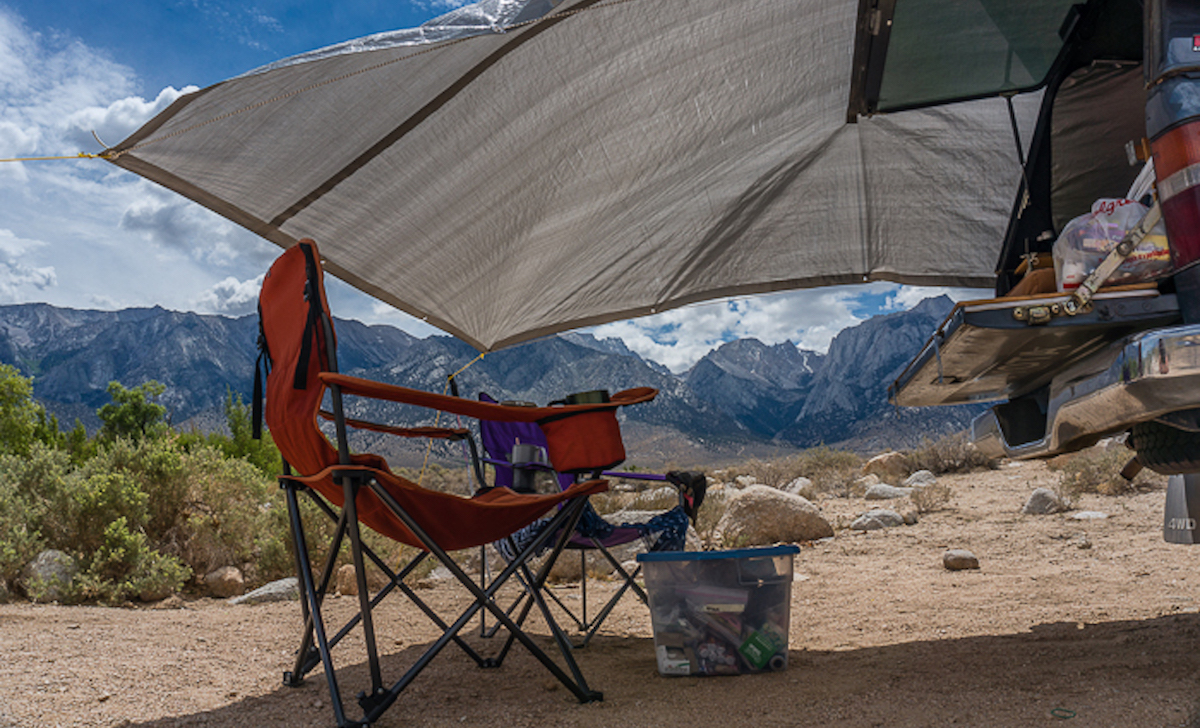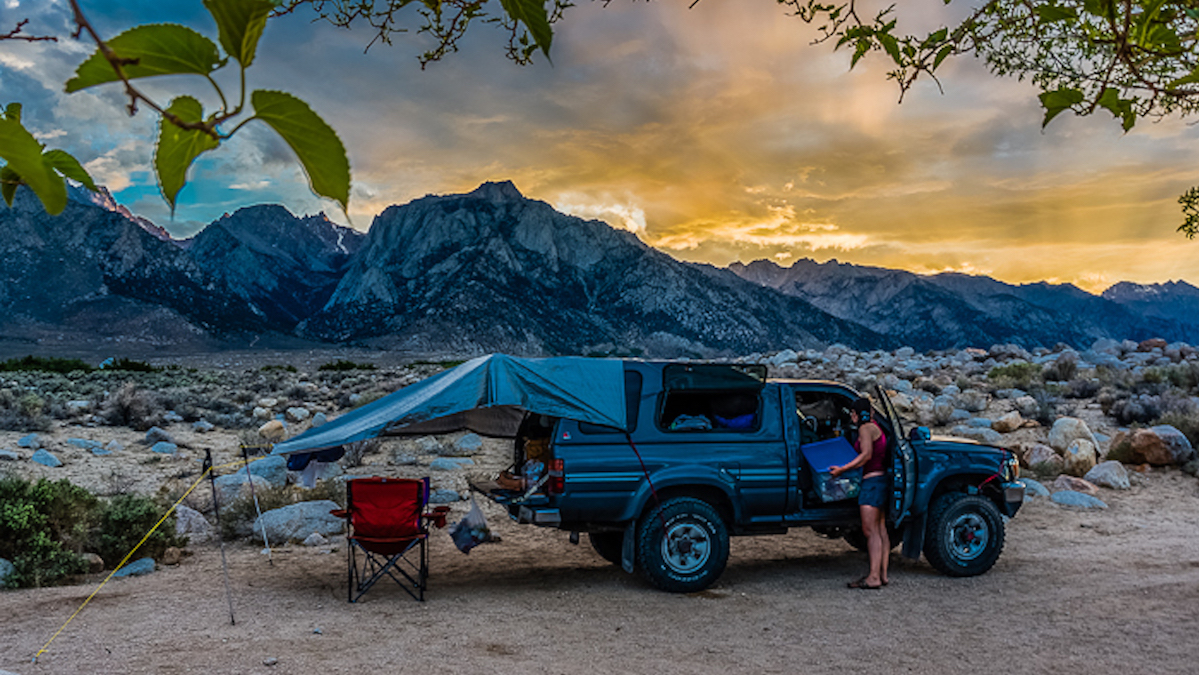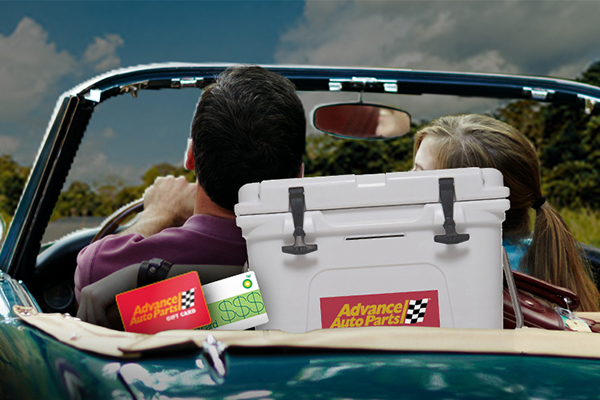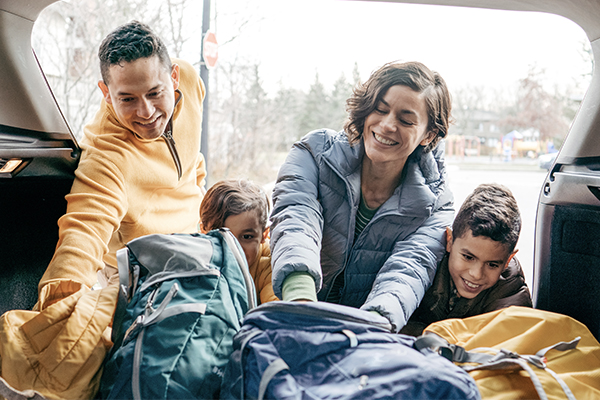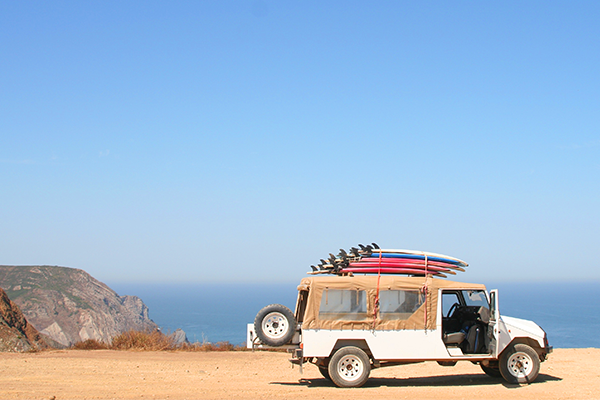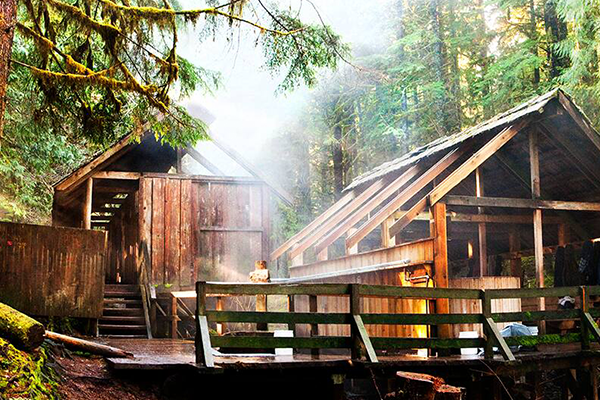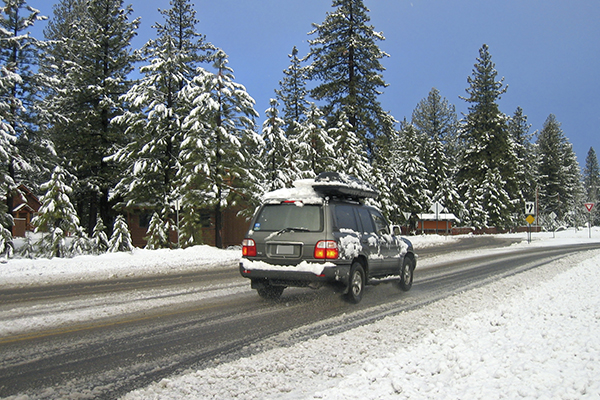
There is something both practical and adventurous about camping in your daily driver. You can go anywhere your four wheels take you, sleep at any place that looks suitable, and discard the strict schedules of airlines and hotel chains. Wake up to a scarlet sunrise, cool breeze blowing through open windows, miles of scenic nature stretched as far as the eye can see. Crack an egg into your cooktop pan, watching it smoke and sizzle while sipping on freshly brewed coffee. A bird sings you a song from the nearby shade tree. Life is good.
But it's not all peace and relaxation. “Truck camping," whether in your pickup, SUV, or even sedan, requires creative solutions and letting go of some creature comforts. Mainly practiced by outdoorsy people, like rock climbers, hikers, fishermen, and skiers, truck camping has grown in popularity as of late, with many DIYers joining the scene and the setups getting more and more sophisticated.
The concept starts simple—live and sleep in the back of your vehicle—and then you can customize it as far as you'd like. Some folks do it for a weekend trip, some for a two-week vacation, and others do it year-round or by the seasons. There's no lease or contract!
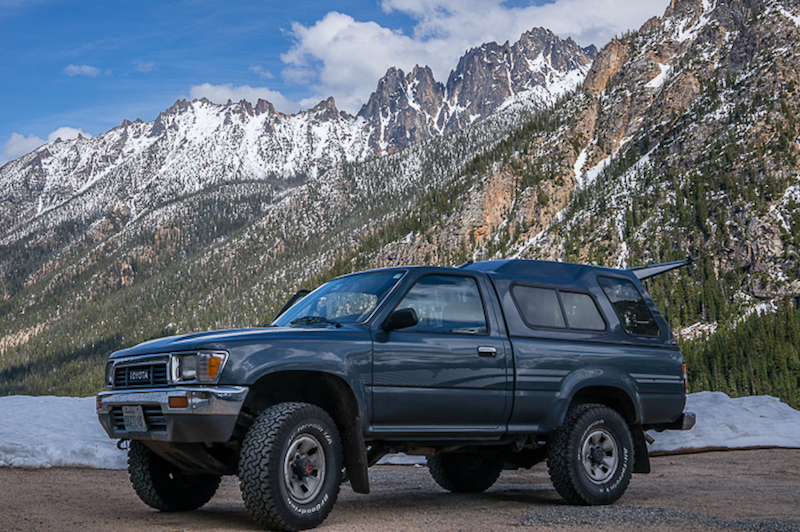
Getting started
I tried truck camping last summer for a weekend beach trip, using our trusty Honda Element as a base camp and sleeping shelter for two. The only extra supplies I needed were mosquito netting and automotive tape to cover the windows. For my setup, we were able to easily remove the backseats (thank you, Honda designers), move up the front seats, and then lay out a thick comforter and blanket to sleep on. We opened the top half of the back hatch to let air in and it worked out great; we slept like babies.
This was a good setup for one weekend, but what about longer trips, when you need storage solutions, or if you have a pickup truck with a bare metal liner?
We brought in truck-camping expert Ryan from Desk to Dirtbag to share his tips on getting started. Ryan has been traveling the world for over three years—touring the American West all the way down to South America—driving a pickup truck that he modified with wood shelving and a sleeping platform in the back. Most importantly, he did it on a modest budget and DIY-style (with a little help from his friends).

The author and his Honda Element + mosquito netting setup.
Ryan's truck-camping essentials
Ryan tells us about the few essentials that all truck campers need:
- Canopy—You'll need a roof over head first and foremost. If you are purchasing a new canopy, I would highly recommend getting an elevated canopy, which will allow you more headroom, but any canopy will work.
- Sleeping and Storage—The second step is building out the back for both gear storage or organization and for sleeping. While some people build complex drawer systems, I recommend the “back-shelf" approach, where you organize gear along the back of the truck bed and stick your feet underneath the shelves for sleeping. Personally, I made a “transformer" setup, which allows either an elevated sleeping platform with gear underneath, or the back-shelf approach. About 99% of the time I use the back-shelf setup, but for quick overnighters I use the sleeping platform (which is simple but offers less living space).
- Supplies and Cooking—Your best bet is to look toward the camping and backpacking world for these items since they're designed to be portable and light. I use a foam mattress that rolls up, along with a nice down sleeping bag, and a household pillow for sleeping. For cooking I've got a dual-burner propane stove that allows me to cook almost anything. Then I keep a simple assortment of cooking supplies, a box of easily prepared foods (oatmeal, pastas, eggs, burritos, etc.), and a cooler to keep them fresh.
- Creature Comforts—I highly recommend a nice foldable chair for hanging around at camp and maybe a hammock for stringing up between trees with a nice campfire going under the stars.
Truck camping is as simple as that, but you will be well served with a few simple additions, such as a dual-battery setup and isolator, which allows you to use electronics in the back without worrying about killing your starter battery or some simple internal lighting, either battery-operated or wired to your second battery."
Get out and start exploring
"The most important part is just getting out there on the road and having a good time, and truck camping is one of the absolute best ways to travel—whether for a weekend or for a year.
For me, truck camping was the perfect fit as I left my job and set my sights on a road trip of the American West. It's comfortable, affordable, and allows me to travel almost anywhere thanks to 4WD.
I've spent nights up in below-freezing temps in the Canadian Rockies, camped out in Death Valley, and spent numerous nights in Walmart or casino parking lots. More recently, truck camping has led me to nights in front the roaring Pacific in Baja California or beside a beautiful remote lake in Costa Rica.
Truck camping has taken me all over the American West and all of Central America—and right now I'm embarking on a yearlong trip through all of South America, with my trusty truck as my home away from home."
Thanks Ryan!
Ryan is behind the website Desk to Dirtbag, documenting his travels on the road and around the world after leaving his Washington, D.C., desk job. He is also the author of the book Big Travel, Small Budget, which talks about how he's been able to travel so cheaply, for so long, including truck camping. You can currently find him driving and truck camping somewhere in South America. Follow Desk to Dirtbag on Facebook, Instagram, or Twitter to see his adventures.
Have you ever truck-camped? Or are you planning to for the first time? Share your tips below.

